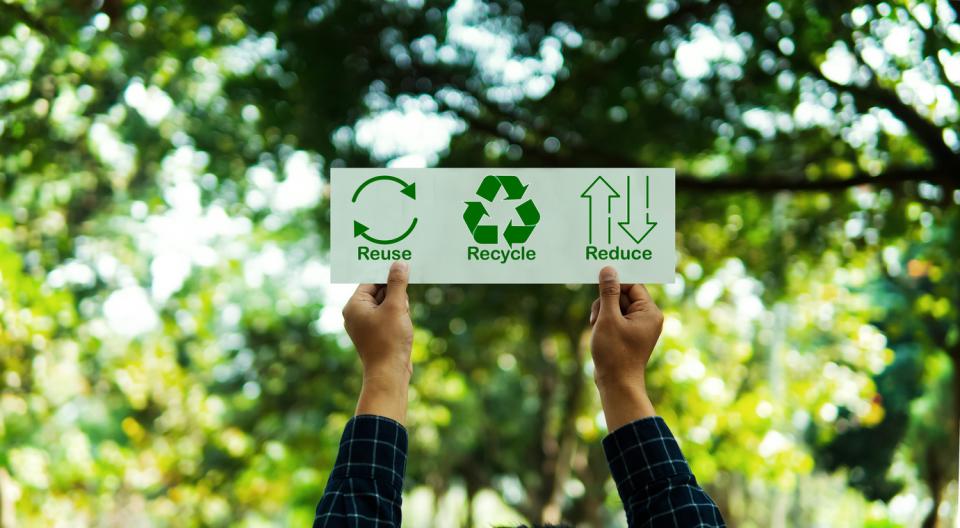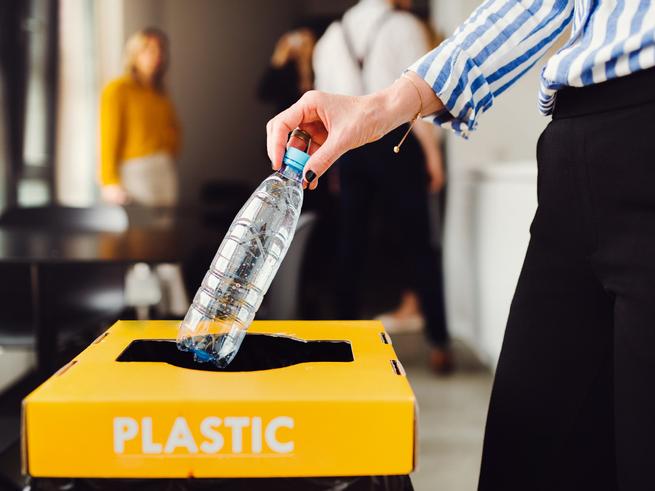As a sector, we excel at reimagining learning, community and space. What if we applied the same creativity to how we manage materials?
Universities are navigating some of the most complex financial and environmental challenges in recent memory. In such climates, the instinct is often to tighten budgets and scale back. But what if we used this time to bolster initiatives aimed at solving these challenges, such as circular economy projects?
Many institutions already run reuse and redistribution schemes in collaboration with sustainability teams or student volunteers, framing them as engagement activities. They are positive but peripheral. But what if we shifted our perspective? What if we saw reuse not as an optional project but as core infrastructure that supports university life?
What we accept and what we overlook
Most universities accept the carbon impact of long-haul flights as a necessary part of doing business – vital to recruitment, global visibility and student diversity. We justify those emissions, despite their significance, because they bring value to the institution.
We rarely award circular economy initiatives the same recognition. Despite reducing emissions, supporting communities and lowering operating costs, we see them as nice-to-haves. Yet if we can accept certain emissions as the cost of doing business, surely we can also accept investment in the systems that prevent them.
This isn’t about blame, it’s about balance. It’s about recognising that circularity creates shared value, strengthening relationships with local organisations, improving student outcomes and enhancing institutional resilience – all while contributing to sustainability goals.
Circularity as strategic infrastructure
At my institution, a long-running reuse and redistribution scheme now intercepts 30 to 40 tonnes of unwanted items each year. The project has achieved a 27 per cent reduction in delivery costs while maintaining its environmental and social benefits.
By aligning logistics, staffing and communications with existing university systems, circularity became more efficient, visible and resilient. It wasn’t about new investment – it was about using existing resources differently, reframing circularity as a logistical function rather than an extracurricular activity. It revealed what happens when we treat sustainability as a systems question, not a marketing one.
- Spotlight guide: Higher education’s bumpy road to net zero
- How we partner with landowners to sequester carbon emissions
- Go green, AI!
Where things can get stuck – and how to shift them
In many institutions, circular economy schemes face practical hurdles. Not because they’re flawed, but because they don’t always fit easily into established ways of working. Common barriers (and ways through them) include:
Temporary infrastructure
Projects relying on short-term storage, such as marquees or shipping containers, can struggle to scale. Securing modest indoor spaces can make all the difference, as we found through our reuse scheme.
Fragmented ownership
When reuse sits solely within one team, it may be disconnected from colleagues managing logistics, waste or student life. Coordinated delivery unlocks greater impact.
Short time frames
Donation schemes often focus on summer departures but people discard items all year. Treating circularity as business as usual embeds it more naturally into operations.
Invisible value
It’s easy to overlook what circular projects save – avoided emissions, reduced purchases, stronger student engagement, community benefit. Tracking these indicators makes the value visible and compelling.
Embedding circularity in university life
So how can we embed circular thinking more intentionally? Integrating circular practices into business as usual will look different for every university, but these lessons stand out:
Convenience is key: year-round, visible donation points collected about 70 per cent of donations in this year’s reuse initiative at my university.
Track more than weight: this is where the true shared value emerges. Consider the social impact of items distributed to local charities, refugee support groups, homelessness services and low-income students. These are powerful outcomes and often the most meaningful.
Map avoided cost and carbon: every item diverted from landfill or retained in circulation is a saving in procurement, disposal or embedded emissions. These metrics help communicate value beyond internal audiences.
Integrate and involve: students gain valuable experience through these projects. Maintaining a balance between engagement and efficiency is key, supported by collaboration across departments and teams.
This work doesn’t require wholesale change or complex transformation. Much of the value already exists. It’s about recognising it, amplifying it and finding small but strategic ways to integrate circularity into how we think and operate.
An opportunity to reimagine our systems
By expanding our understanding of what constitutes infrastructure, we can view circular economy work as an integral part of a functioning, future-ready university. It aligns with our values, responds to student demand and delivers measurable outcomes – from cost savings to carbon reduction to community resilience.
If we’re prepared to absorb the emissions of a globalised student community because it reflects who we are, perhaps we can also invest in the systems that reduce harm and give something back.
This isn’t about doing more with less. It’s about seeing the value in what’s already around us – and giving it the systems it needs to thrive.
Darren Wilkinson is sustainability projects officer at Lancaster University.
If you would like advice and insight from academics and university staff delivered direct to your inbox each week, sign up for the Campus newsletter.




comment